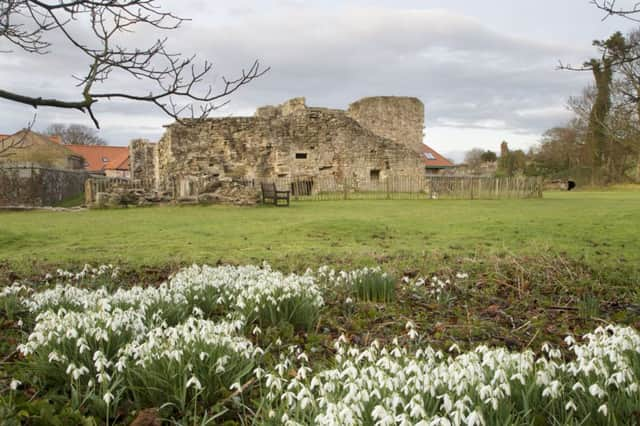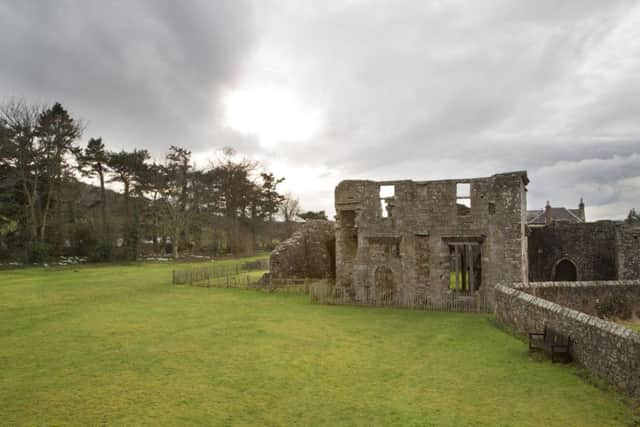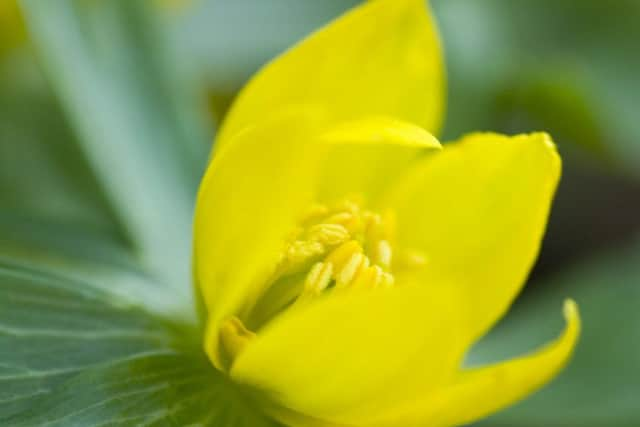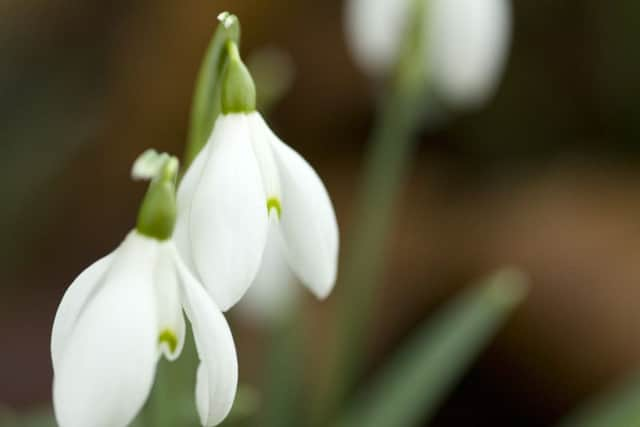Following snowdrop trails in Fife's historic gardens
This article contains affiliate links. We may earn a small commission on items purchased through this article, but that does not affect our editorial judgement.


THE east of Scotland enjoys a good reputation for its snowdrop trails, so if drifts of white flowers set your heart racing as they herald the arrival of spring, this is one of the best areas to visit.
The ruins of Balmerino Abbey at Newport on Tay provide an atmospheric backdrop for a snowdrop walk. The former St Edward’s Abbey was in use for hundreds of years before becoming the home of the Lords of Balmerino after secularisation in 1603.
Advertisement
Hide AdAdvertisement
Hide AdThe grounds are mainly grass and the site overlooks the Tay, with fine views. It was probably because it was so accessible by ship that it made such a good location for a monastery, says Mark Armour, the National Trust for Scotland’s head gardener for east Fife, which owns the site.


“The garden at the time of the monastery would have been used for herbs,” he adds. The remnants of a wildflower meadow remain and this is increased each year by seed sowing. Pellitory, an unusual herbaceous perennial, grows on the walls of the ruin. Commonly grown in years gone by, pellitory, from the nettle family, is rare now, and its oil would have been used to soothe toothache, according to Mark’s research.
The small meadow and woodland walk are what makes Balmerino worth visiting now, and visitors are particularly drawn to the Spanish chestnut tree. Squat and wide, its huge gnarled trunk splits into two halves that swirl out from the base. It was reputed to have been planted by Queen Ermengarde when the abbey was founded, however, core drillings to ascertain the age proved it was planted 300 years later in the late 1500s. At more than 450 years of age, it is the oldest tree in Fife and enjoys a reputation for fertility powers that has drawn several couples to marry beneath it.
The snowdrops come in two species, the single-headed Galanthus nivalis and the double-headed flore pleno. Massed in open drifts and in clumps under trees, they light up the woodland walks.
However, it is Balmerino’s aconites that steal the show under the chestnut and around the mixed species woodland. Carpets of yellow flowers bring the first golden rays to gardens after New Year and are spread out in wide, uninterrupted drifts that only large trees can punctuate. This flower, related to the buttercup, is much sought after as an alternative to snowdrops for winter blooms that naturalise in grass. Mark believes what makes the aconites at Balmerino so successful is the fact that they have been left to multiply without interference from gardeners. “Age makes aconites,” he says. “A lot of people struggle to get them established, but these have been left alone.”


As well as working at Balmerino, Mark oversees Hill of Tarvit and Kellie Castle in Fife. These three gardens run by the trust can be visited in a single day. Kellie Castle, at Pittenweem, dates from the early 14th century, and Mark’s team have worked to re-establish its kitchen garden.
This was originally designed by Robert Lorimer and is typical of his work, but unusual in the fact that it was joined to the home. Planted organically, there are 71 kinds of apple including many of the old Scots varieties, such as Stobo Castle and Bloody Ploughman. There are 30 types of rhubarb including Mac Red, Early Champagne and Fife Green Jam.
Kellie Castle has more varieties of snowdrops than Balmerino, with some named varieties. These include G elwesii, the large 25cm-stemmed snowdrop, and “S. Arnot” which is heavily scented.
Advertisement
Hide AdAdvertisement
Hide AdHill of Tarvit in Cupar is an Edwardian mansion. Dating from the 17th century, it was remodelled in 1906 for Frederick Sharp, a jute merchant. The grounds run to 285 acres, with a hill top walk circling the estate. Work is planned to reinstate the kitchen garden and glass house, and like Kellie Castle, it is going the way of being run organically, adds Mark. Lorimer also designed the formal gardens, which include formal lawns, yew hedging, flowering borders and a sunken rose garden. It has a hickory golf course, which owes its name to the type of club that players must use. Sharp wrote the rules of golf and the hickory course helps to style Hill of Tarvit as an Edwardian playground. There are also plans to bring an old curling pond back into use. In terms of the snowdrops, Balmerino and Tarvit are both home to large drifts of the flowers whereas Kellie has what could be described as smaller, more unusual collections in small clumps within the walled garden.


Balmerino Abbey has no kitchen garden or golf course, but does have the ruins that evoke centuries of monastic tradition in Fife. Woodland maintenance and keeping the building stable account for most of the work done there, but the snowdrops will be divided and replanted “in the green” – with their leaves still on, which is the best way to get them to multiply.
They are variously ruined, remodelled and restored, but together, these three gardens offer a glimpse into the past where one thing has come back century after century: the snowdrops.
• For more snowdrop gardens, go to www.nts.org.uk or www.scotlandsgardens.org